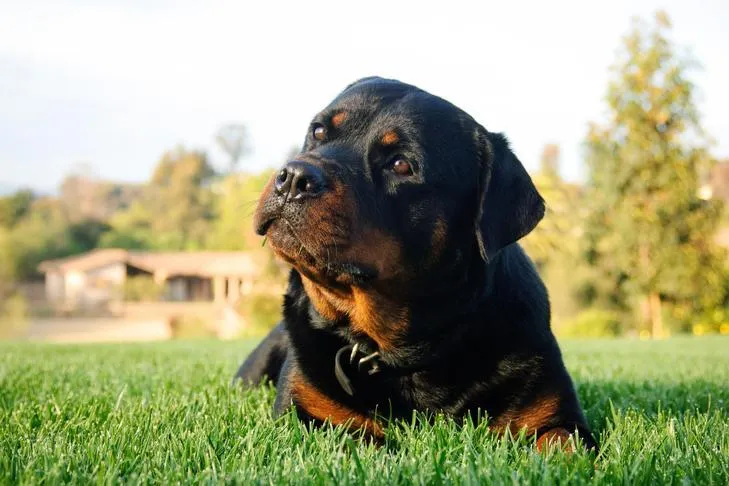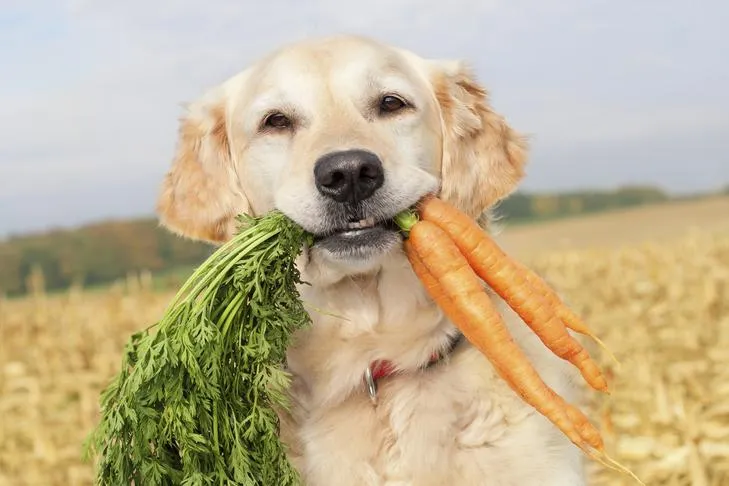It’s natural for dog owners to want to share their favorite snacks with their furry companions, believing that if it’s safe for humans, it must be fine for dogs. However, this assumption can be dangerous. Dogs digest food very differently than humans, and certain seemingly harmless items, especially certain vegetables, can lead to serious health issues, long-term problems, or even be life-threatening. Understanding What Vegetables Are Dogs Not Allowed to eat is crucial for ensuring your pet’s well-being.
While dogs are omnivores and can benefit from some fruits and vegetables as occasional treats, they don’t require them as a core part of their diet. Their primary nutritional needs are met by high-quality dog food. Nevertheless, offering safe, dog-friendly produce in moderation can provide additional vitamins, minerals, fiber, and enrichment. The key lies in knowing the difference between what’s beneficial and what’s toxic or harmful. For instance, understanding specific dietary restrictions, like what can French Bulldogs not eat, can be particularly important for certain breeds.
This comprehensive guide will help you identify which vegetables are strictly off-limits for dogs, explain why they pose a risk, and provide essential advice for keeping your canine companion safe and healthy.
Why Certain Vegetables Are Forbidden for Dogs
The dangers of specific vegetables to dogs stem from various factors, including toxic compounds, digestive issues, and physical hazards. Unlike humans, dogs may lack the enzymes to properly break down certain substances, or their systems might react adversely to compounds that are innocuous to us.
Many toxic vegetables contain substances that can cause a range of symptoms, from mild gastrointestinal upset like vomiting and diarrhea, to severe conditions affecting the red blood cells, kidneys, or nervous system. Some vegetables also present physical risks, such as choking hazards or potential for intestinal blockage, especially if consumed improperly. As a responsible dog owner, staying informed about these potential dangers is the first step in preventing accidental poisoning or injury.
What Vegetables Are Dogs Not Allowed To Eat?
When it comes to your dog’s diet, “better safe than sorry” is always the best approach. Here’s a detailed look at vegetables and plant parts that dogs should absolutely avoid:
Onions, Garlic, Leeks, and Chives (Allium Family)
All members of the Allium family – including onions, garlic, leeks, and chives – are highly toxic to dogs. They contain N-propyl disulfide, a compound that damages red blood cells, leading to a condition called hemolytic anemia. This can result in weakness, lethargy, pale gums, elevated heart rate, and even collapse. The toxicity is cumulative, meaning even small, repeated exposures can be harmful over time.
Symptoms of Allium poisoning may not appear immediately, sometimes taking several days. Both raw and cooked forms of these vegetables are dangerous, as are powdered versions found in many human foods (e.g., onion powder in spices). It’s especially critical to keep any dishes containing these ingredients away from your dog. This is a prime example of what meat you should not feed your dog if it’s seasoned with these common kitchen ingredients. Japanese breeds like Akitas and Shiba Inus are particularly susceptible, but all dogs are at risk.
Wild Mushrooms
While certain store-bought mushrooms can be safe for dogs (though generally not recommended due to lack of significant nutritional benefit once cooked and potential for confusion), wild mushrooms are an absolute no-go. There are thousands of mushroom species, and distinguishing between poisonous and non-poisonous varieties can be extremely difficult, even for experts.
Toxic mushrooms can cause a range of severe symptoms, including gastrointestinal distress, neurological issues (tremors, seizures), liver failure, kidney damage, and even death. If you suspect your dog has ingested a wild mushroom, seek immediate veterinary attention. Always supervise your dog closely in areas where wild mushrooms might grow, such as forests, parks, or even your own backyard.
Tomatoes (Green Parts & Unripe)
The ripe, red flesh of a tomato is generally considered safe for dogs in very small quantities. However, the green parts of the tomato plant – including the leaves, stems, and unripe tomatoes – contain a toxic substance called solanine. Solanine can cause gastrointestinal upset, lethargy, weakness, and loss of coordination in dogs.
A dog would typically need to ingest a significant amount of the green plant material to become seriously ill, but it’s best to err on the side of caution. If you grow tomatoes, ensure your dog doesn’t have access to the plants. Avoid feeding any green or unripe tomatoes.
Corn on the Cob
While corn kernels are generally safe for dogs in moderation, the cob itself is a serious choking hazard and can cause a dangerous intestinal obstruction. Dogs love to chew, and a corn cob, even after the kernels are removed, can easily become lodged in their throat or digestive tract. This can lead to severe pain, vomiting, and require emergency surgery.
Always remove corn kernels from the cob before offering them to your dog. It’s important to remember that physical hazards like these can be just as dangerous as chemical toxins.
 Rottweiler laying down in the yard, its head tilted.
Rottweiler laying down in the yard, its head tilted.
Raw Potatoes & Green Potatoes
Cooked, plain potatoes (without butter, salt, or toppings) are often included in dog food recipes and can be safe in moderation. However, raw potatoes, especially those with green spots or sprouts, contain solanine, similar to unripe tomatoes. Solanine is toxic and can cause vomiting, diarrhea, lethargy, and in severe cases, neurological issues.
Green areas on potatoes indicate higher concentrations of solanine. Always peel and thoroughly cook potatoes before offering them to your dog, and ensure they are free of any green discoloration.
Rhubarb
Rhubarb is another vegetable that dogs should never eat. The leaves of the rhubarb plant contain high levels of oxalic acid, which can cause severe kidney damage and other serious health problems. Even the stalks, while containing less oxalic acid, can still be harmful. Symptoms of rhubarb poisoning can include excessive drooling, vomiting, diarrhea, lethargy, weakness, and tremors. In extreme cases, it can lead to kidney failure and death. Keep your dog away from rhubarb plants in your garden.
Asparagus
Asparagus isn’t inherently toxic to dogs, but it offers virtually no nutritional benefits once cooked to a soft enough consistency for them to digest easily. Raw asparagus spears are tough and fibrous, posing a choking risk and being difficult for a dog’s digestive system to break down. By the time it’s cooked sufficiently, most of its vitamin content is lost. Given the numerous other safe and beneficial vegetable options, asparagus is best avoided for dogs. There are many better and more beneficial choices if you want to share a vegetable treat.
Safe Vegetables for Dogs (When Offered in Moderation)
While we’ve focused on what vegetables are dogs not allowed to eat, it’s also important to know which ones are perfectly fine and can even offer health benefits when given appropriately. Always wash vegetables thoroughly and cut them into bite-sized pieces to prevent choking.
Broccoli
Small amounts of cooked broccoli are safe and offer fiber and vitamin C. However, broccoli florets contain isothiocyanates, which can cause mild to moderate gastric irritation in some dogs if consumed in large quantities. Avoid tough stalks as they can cause obstructions.
Brussels Sprouts
Rich in nutrients and antioxidants, Brussels sprouts can be a healthy treat. Just like in humans, they can cause gas in dogs, so offer them in very small quantities and cooked.
Carrots
An excellent low-calorie snack, carrots are high in fiber and beta-carotene (which converts to vitamin A). Their crunchiness can also be great for dental health.
 Golden Retriever holding carrots.
Golden Retriever holding carrots.
Celery
Celery provides vitamins A, B, and C, along with nutrients that can support heart health. It’s also known for helping to freshen doggy breath.
Green Beans
Plain green beans – fresh, steamed, or no-salt canned – are a healthy, low-calorie snack packed with vitamins and minerals. They are an excellent choice for overweight dogs.
Peas
Green peas, snow peas, and sugar snap peas are safe for dogs. They are rich in vitamins, minerals, protein, and fiber. Avoid canned peas with added sodium.
Pumpkin
Pure pumpkin puree (not pie filling) is a superfood for dogs, rich in antioxidants and effective in relieving both diarrhea and constipation due to its fiber content. It’s often recommended for sensitive stomachs.
Spinach
While dogs can eat spinach, it’s not the best choice. Spinach is high in oxalic acid, which can interfere with calcium absorption and potentially lead to kidney damage if consumed in very large quantities over time. Other vegetables offer more straightforward benefits without this concern.
What Fruits Are Dogs Not Allowed To Eat?
While the focus here is on vegetables, it’s worth a quick mention of fruits to avoid, as the original article covers them and they are important for overall pet safety.
Avocado
Avocado contains persin, a toxin found in the pit, skin, and leaves that can cause vomiting and diarrhea in dogs. While the flesh has less persin, its high fat content can lead to gastrointestinal upset and potentially pancreatitis, especially for dogs already susceptible or those needing what a dog with pancreatitis should not eat.
Cherries
Cherry pits, stems, and leaves contain cyanide, which is highly toxic to dogs. Cyanide disrupts oxygen transport in blood cells. Always remove the pit and only offer small amounts of the fleshy fruit.
Grapes and Raisins
Grapes and raisins are highly toxic to dogs, capable of causing acute kidney failure. The exact mechanism of toxicity is unknown, but even small amounts can be dangerous. Always keep these fruits out of your dog’s reach.
General Guidelines for Feeding Produce to Your Dog
When incorporating any new food into your dog’s diet, especially fruits and vegetables, remember these important guidelines:
- Always Consult Your Veterinarian: Before introducing any new food, especially if your dog has existing health conditions or dietary sensitivities, speak with your vet. They can provide personalized advice based on your dog’s specific needs, much like advising what you can feed your puppy or foods puppies can eat at 3 months.
- Introduce New Foods Slowly: Start with very small amounts to see how your dog reacts. Watch for any signs of digestive upset like vomiting, diarrhea, or gas.
- Prepare Properly: Always wash produce thoroughly to remove pesticides. Remove any seeds, pits, stems, or leaves that could be toxic or pose a choking hazard. Cut vegetables into small, easily digestible pieces. Some vegetables are best cooked (plain, without seasoning) to aid digestion.
- Moderation is Key: Even safe vegetables should only be given as occasional treats and in small quantities. They should not make up a significant portion of your dog’s diet, which should primarily come from balanced commercial dog food.
- Watch for Adverse Reactions: Even with safe foods, some dogs may have individual sensitivities. Monitor your dog for any unusual behavior or symptoms after eating new produce.
- Secure Toxic Foods: Keep all forbidden vegetables, fruits, and other human foods out of your dog’s reach. Use dog-proof trash cans and supervise your dog in areas where toxic plants might be present, such as gardens or foraging spots.
Conclusion
Understanding what vegetables are dogs not allowed to eat is a fundamental part of responsible pet ownership. While sharing human foods with your dog can be a loving gesture, it’s vital to prioritize their health and safety by being informed about potential toxins and hazards. The Allium family (onions, garlic), wild mushrooms, green potato parts, rhubarb, and corn cobs are among the top vegetables to avoid due to their toxic compounds or physical risks.
By sticking to veterinarian-approved guidelines, introducing new foods cautiously, and always offering safe produce in moderation, you can ensure your beloved canine companion enjoys a healthy and happy life, free from preventable dietary dangers. When in doubt, always consult your veterinarian – your best resource for tailored advice on your dog’s nutrition.
